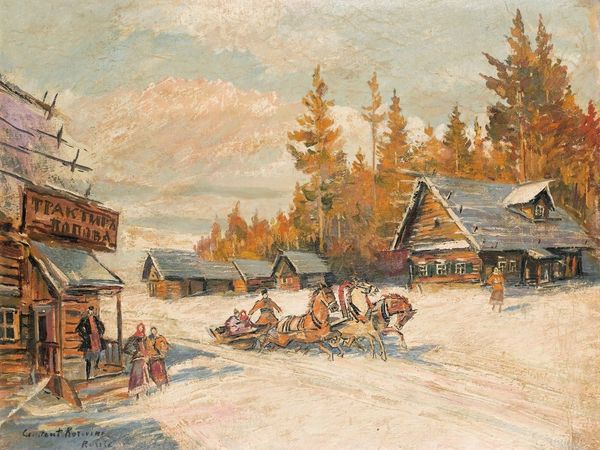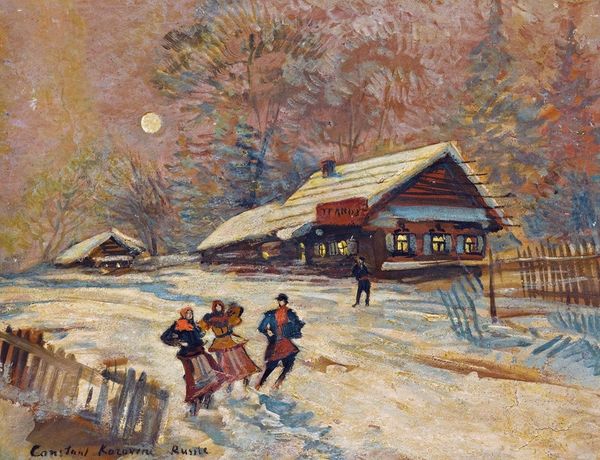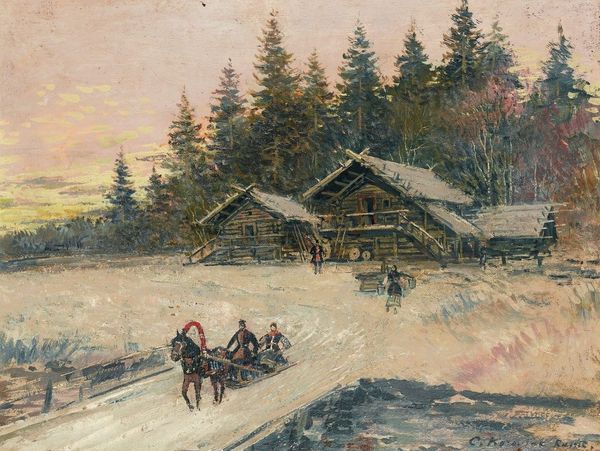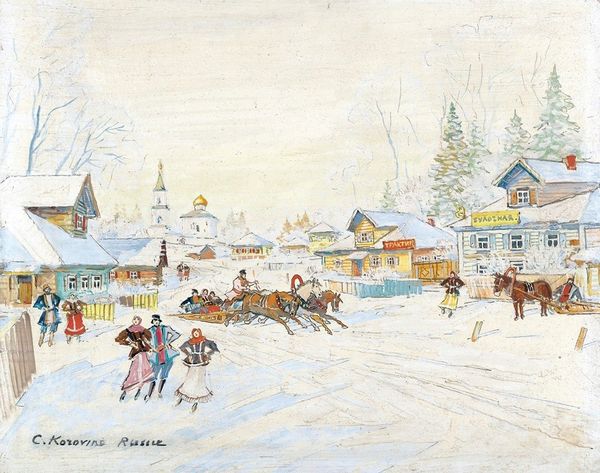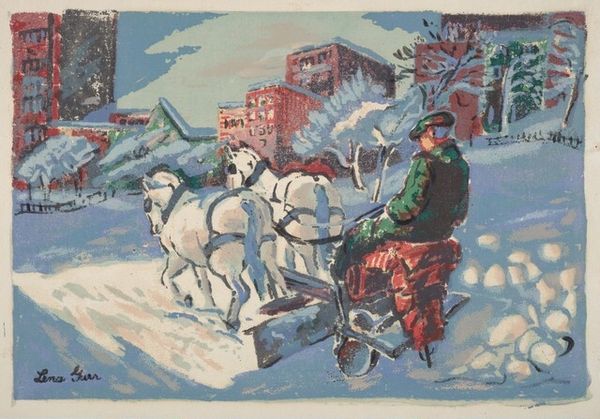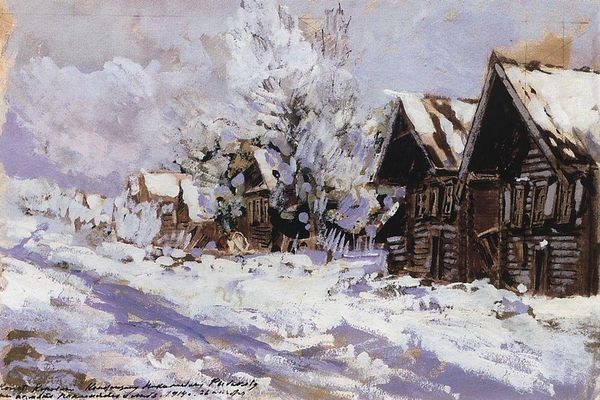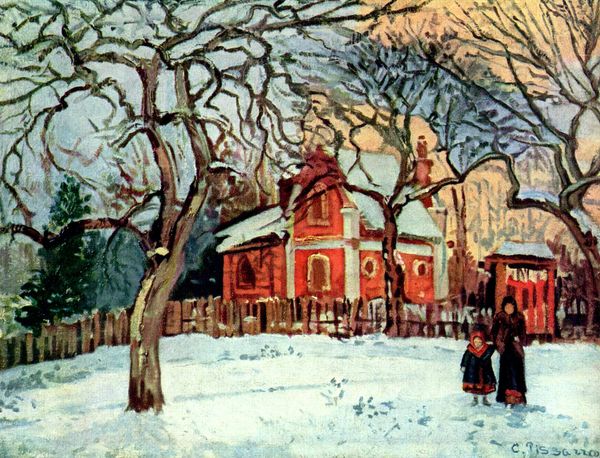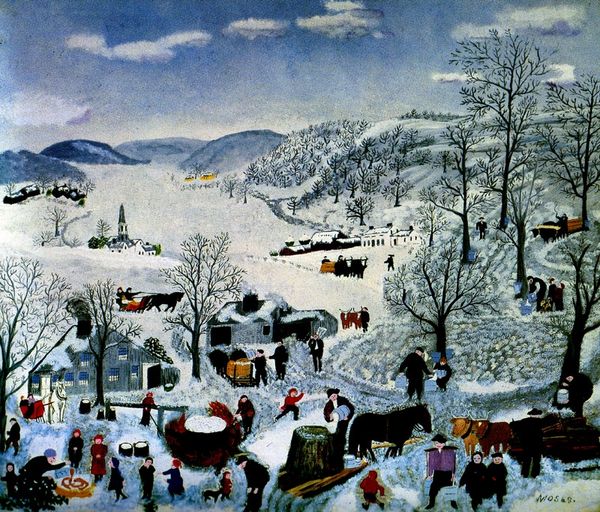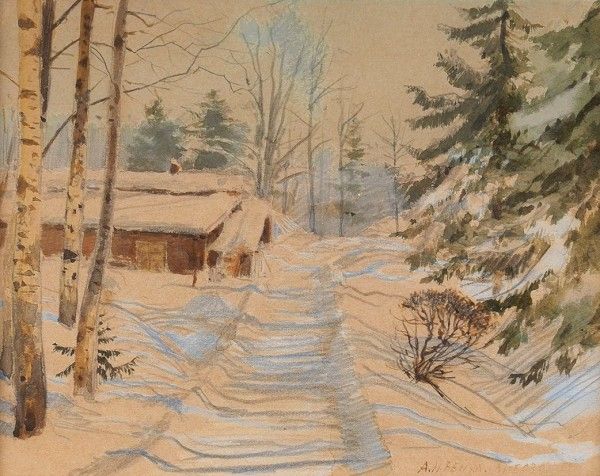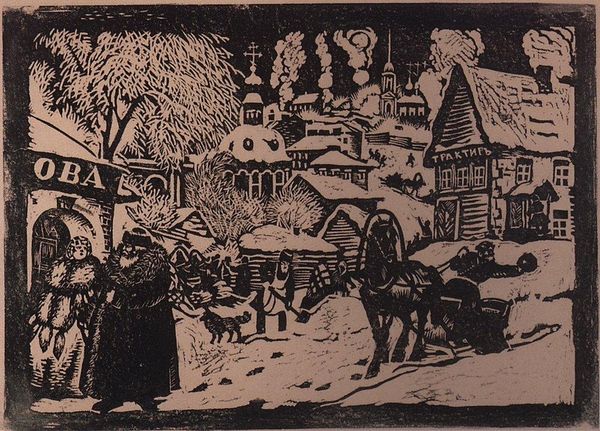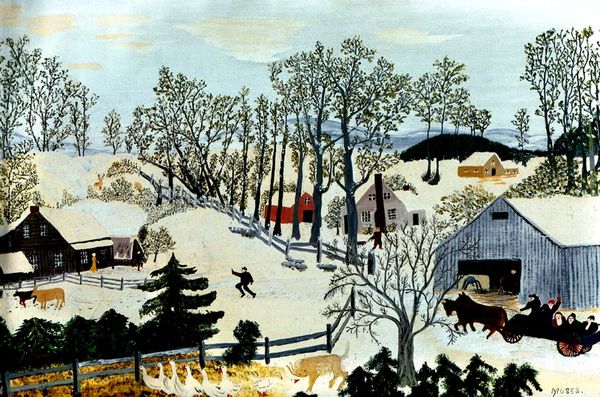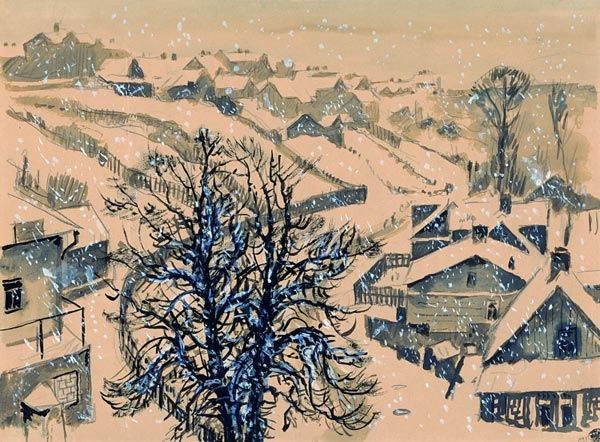
Copyright: Public domain
Editor: This painting, "Russia.Nostalgia," was created in 1930 by Konstantin Alexeevich Korovin, using oil paints. It feels very wistful and quiet, like a memory. The village scene under the pink-tinged sky really evokes a sense of longing. What’s your take on this piece, especially considering the historical context? Curator: That's a keen observation. Korovin painted this in exile, in France, after the Russian Revolution. The “nostalgia” in the title points directly to a yearning for a Russia he could no longer return to. Looking at it from a socio-political lens, we can see this seemingly simple winter scene as a powerful statement about displacement and cultural identity. Note the inscription on the building "Trade Diverse Items"; It indicates the center of the village and social interactions, hinting at what was lost. Do you think the Impressionistic style reinforces this feeling in any way? Editor: Definitely! The soft brushstrokes and diffused light seem to blur the details, making it feel less concrete and more like a dream. Was impressionism a common style for expressing such political feelings during that time, or is there a particular reason he chose this approach? Curator: Impressionism wasn't explicitly used as political commentary but it did offer a departure from more rigid, academic styles favoured by the establishment. The Russian avant-garde movement more broadly was often at odds with Soviet ideologies, deemed insufficiently didactic. Korovin was associated with "The World of Art", so in using that stylistic vocabulary, he distances himself from socialist realism, which was gaining prominence in Russia at the time, almost subtly rejecting the artistic expectations of the Soviet regime and the associated control. The choice becomes, in itself, a form of expression. Editor: That's a fascinating point, I never considered the art style choice being an opinion or political statement itself. I'll definitely look at paintings in a different light going forward. Thanks! Curator: Indeed! By understanding art as existing within a specific time and set of social forces, it gives the image a great level of significance.
Comments
No comments
Be the first to comment and join the conversation on the ultimate creative platform.

